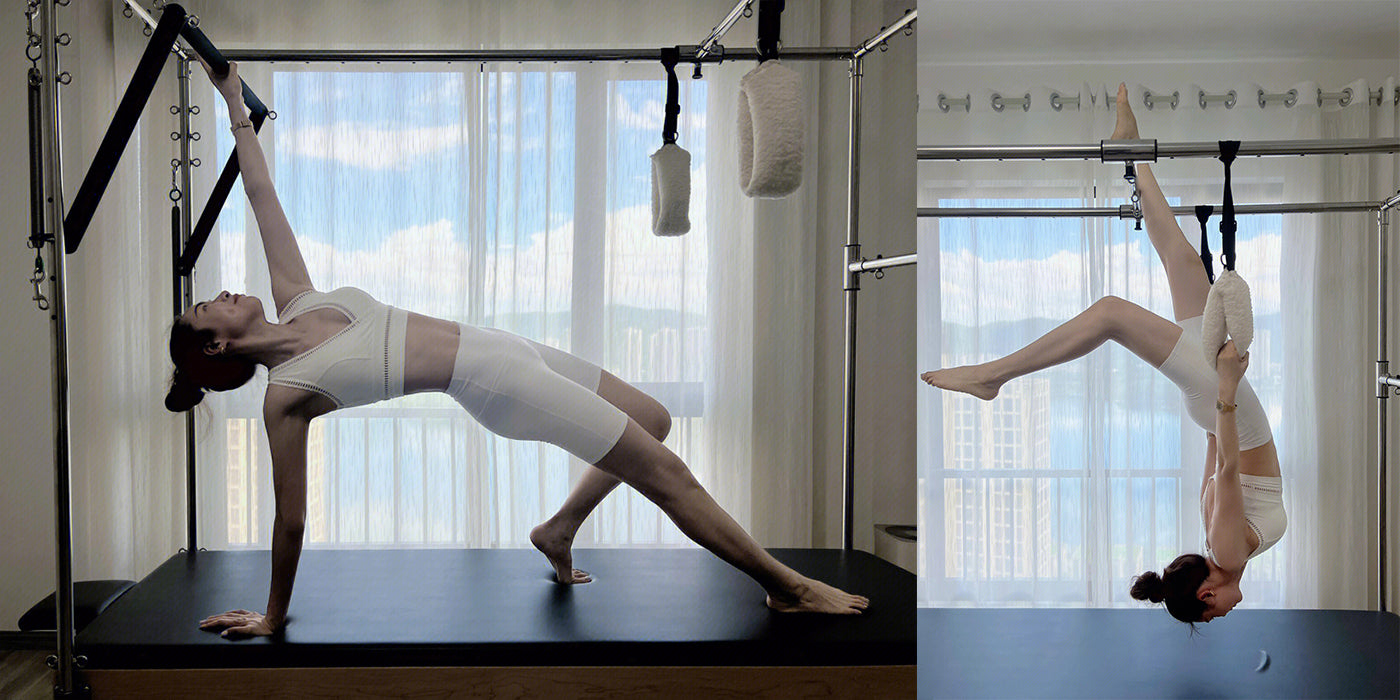
What to Wear to a Pilates Workout?
Navigation
- Choosing the Right Basics for Your Pilates Outfit
- Selecting Tops and Sports Bras for Pilates Comfort
- Best Bottoms to Wear for a Pilates Class
- Proper Footwear and Socks for Pilates Sessions
- Selecting Suitable Accessories for Your Pilates Practice
- What Not to Wear to Your Pilates Class
- Final Thoughts
So, you're thinking about jumping into Pilates, right? It's an incredible way to build strength, align your body, and boost flexibility, but before we dive in, let's chat about what to wear. Imagine me as your go-to buddy for Pilates fashion advice. We're going to talk about why those snug high-waisted pants rock, the importance of choosing the right sports bra, and even the magic of grip socks that keep your feet from sliding around. I'll also give you the lowdown on what not to pack for class - like baggy clothes that could trip you up. Whether it's picking tops that stay put or deciding if shorts work for you, I've got all the tips to make sure your outfit is as ready for Pilates as you are. Stick with me, and you'll walk into your class feeling confident and focused, without a wardrobe worry in sight.
Choosing the Right Basics for Your Pilates Outfit
When choosing pants for your Pilates class, opt for high-waisted options. They offer practicality by staying secure above your hips, ensuring they don't slip regardless of your movements. This stability is essential-it saves you from having to interrupt your workout to adjust your clothing, allowing you to stay focused on your exercise.
Leggings are a popular pick in Pilates classes. They conform snugly to your body, enabling your instructor to observe your muscles and joints clearly. This visibility is crucial for receiving accurate feedback on your posture and movements. A helpful hint when selecting leggings: choose styles that are free of zippers or intrusive seams that might press uncomfortably against your skin during floor exercises.
Keep this in mind: the aim is to have workout attire that offers freedom of movement without being a distraction. Clothing that fits this bill will be appreciated not just by you, but also by your instructor, who can then assist you better with your stance and alignment. Once you've got your lower body wear sorted, you'll be all set for those leg circles and planks. With that squared away, it's time to turn our attention to tops and bras to make sure you're fully prepared for the class.

Selecting Tops and Sports Bras for Pilates Comfort
When it comes to tops for Pilates, the ideal choices are those that are fitted enough to stay out of your way but not so tight that they restrict movement. You want a top that moves with you and maintains its shape, allowing you to stretch and reach in every direction without feeling constricted. Additionally, a well-fitted top helps your instructor observe your posture and form. Look for materials that are breathable and wick away moisture to keep you comfortable throughout your session.
For the moderate intensity of Pilates workouts, low-impact sports bras are just right. They provide sufficient support without being overbearing, which is essential for exercises that involve a lot of bending and stretching. These bras typically offer a snug fit that stays in place while still allowing you to breathe deeply and freely. Comfort is paramount, so seek out features like wide straps, soft fabrics, and minimal hardware that could dig into your skin during mat work or equipment use.
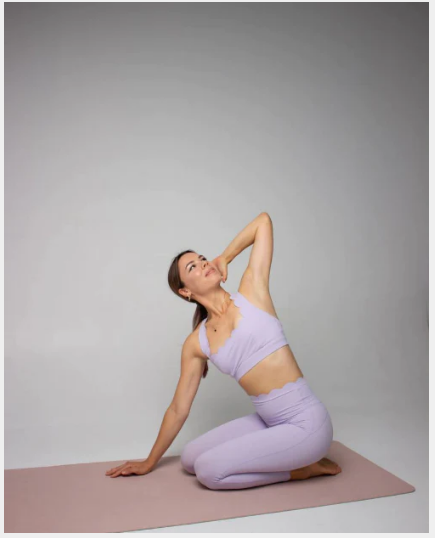
Best Bottoms to Wear for a Pilates Class
Shorts can be a good option for Pilates practice for those who prefer them, but it's important to consider a couple of factors. First, think about personal comfort and how confident you feel moving in shorts. Since Pilates involves a range of movements, including leg lifts and stretches, choosing shorts that provide adequate coverage and stay in place is key. Second, keep studio etiquette in mind. Some studios may have specific dress codes, so it's worth checking in advance. Opt for shorts that are fitted, perhaps with a longer inseam, to ensure they're both comfortable and appropriate for your Pilates class.
If you lean towards wearing trousers during your Pilates sessions, there are options that can work well, even if they're on the looser side. The secret is to look for trousers that, while possibly more relaxed in fit, are made from stretchy, supportive materials. This ensures they hug your body just enough to allow full freedom of movement without being restrictive. It's also important that these trousers aren't too baggy or loose, as excess fabric could get in the way or mask your instructor's view of your alignment and posture. A slightly fitted cut that moves with you will help you and your instructor make the most out of your Pilates practice.
Proper Footwear and Socks for Pilates Sessions
In most Pilates classes, you'll find that going barefoot is the standard practice. This allows for a better connection with the floor or equipment, offering increased balance and stability. However, it's not uncommon for certain studios to have specific preferences or rules when it comes to footwear. Some might require or recommend minimalistic shoes designed for studio exercise, which protect your feet while still allowing for that crucial barefoot-like feel. It's always a good idea to check the studio's policy before your first class.
While bare feet are common in Pilates, socks-especially those with grips on the bottom-are an excellent choice for added stability. Grip socks provide traction, helping to prevent slips on studio equipment or slick floors. They can also keep your feet clean and provide a barrier against cold surfaces. Look for pairs that offer a snug fit to ensure they don't move around as you exercise. Choosing socks with grips can be particularly helpful during standing exercises or when working on reformers, where secure footing is essential.
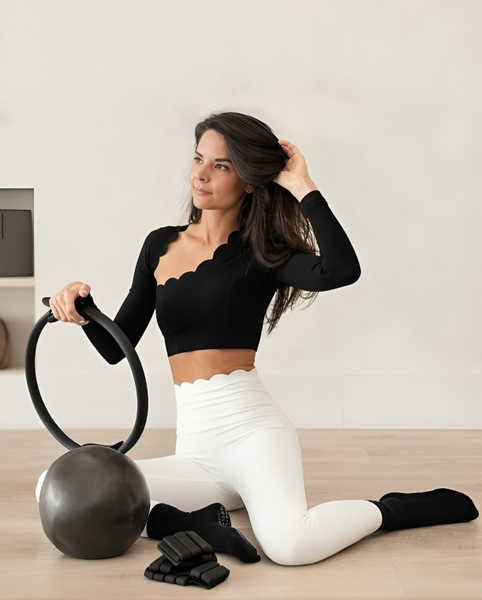
Selecting Suitable Accessories for Your Pilates Practice
Resistance Bands
Resistance bands are an excellent accessory for enhancing your Pilates workout by adding extra resistance to the exercises, which can help in building strength and increasing flexibility. They come in various lengths and tension levels to suit different fitness levels and exercises. Look for high-quality latex or fabric bands that offer durability and consistent resistance throughout your movements.
Pilates Rings
Also known as magic circles, these provide gentle to moderate resistance in an exercise. They're perfect for targeting muscles in the arms, chest, pelvic floor, and legs. A Pilates ring can intensify your practice and encourage proper form. Choose one with padded handles for comfort during use.
Stability Balls
Incorporating a stability ball into your Pilates routine can improve balance, coordination, and core strength. These balls challenge your stability during the exercises, forcing your body to engage multiple muscle groups. Select one that's burst-resistant and matches your height for safe use.
Pilates Mats
While often included in studio sessions, having your own Pilates mat for home workouts is essential. These mats are thicker than standard yoga mats, offering cushioning support for your spine and joints during various exercises. Look out for mats with a non-slip surface and sufficient padding to accommodate your body comfortably.
Toe Socks
Toe socks, especially those with anti-slip grips on the soles, provide better traction and control while performing Pilates exercises. They allow your toes to spread naturally for improved balance and proprioception (body awareness). Opt for breathable materials to keep your feet comfortable and dry.
Foam Rollers
Not only for self-myofascial release but also as a prop for Pilates, foam rollers can enhance your workout. They can be used to support the back, legs, and neck, adding instability to the exercises, which helps in engaging the core muscles more deeply. Choose a roller with the appropriate density for your comfort level and workout needs.
Hair Ties
A must-have for anyone with long hair, the right hair tie keeps your locks securely out of your face, ensuring that nothing distracts you from your focus on Pilates movements. Opt for soft, fabric-covered elastic bands that offer a firm hold without damaging your hair. For those with thicker or longer hair, consider using stronger, more durable hair ties or even clips to manage your mane effectively.
Headbands and Sweatbands
To further combat distractions from sweat or stray hairs, incorporating a headband or sweatband can be incredibly helpful. Choose ones made from moisture-wicking materials and designed with non-slip features to ensure they stay in place throughout your workout, allowing you to maintain concentration on your form and breathing.

What Not to Wear to Your Pilates Class
Inappropriate Footwear: Avoid wearing shoes or bulky socks. Pilates is usually performed barefoot or with studio-approved grip socks that prevent slipping on the equipment. Regular socks can slide on the reformer or mat, leading to potential injuries.
- Loose-Fitting Clothes: Oversized attire may feel comfortable but can be problematic in Pilates. Loose fabric can get caught in springs or other parts of machines like the reformer. It also makes it difficult for instructors to observe your alignment and form, which is crucial for getting the most out of each exercise.
- Heavy Jewelry:Long necklaces, large earrings, bracelets, and even rings can interfere with your movement and the equipment. These items can catch on clothing, pose a risk of injury, or even break during the more dynamic movements of Pilates.
- Excessive Layers: While layering can be practical for temperature control before warming up, too many layers during Pilates can restrict movement and hide your body's alignment. Remove extra garments once you've warmed up to allow for maximum flexibility and instructor visibility.
- Non-Breathable Fabrics:Fabrics that don't promote airflow can make you overheat quickly. Materials like nylon or polyester blends are often recommended as they tend to wick sweat away from your body, keeping you cool and dry throughout your workout.
- Rigid Undergarments:Women should avoid bras with underwires or clasps that can dig into the skin when lying flat or rolling along the spine. Similarly, men should wear supportive but not constrictive undergarments. Seamless, stretchy materials work best for comfort and function.
- Belts and Drawstrings:Any clothing with hard attachments, such as belts, buckles, or drawstrings with metal aglets, should be avoided. These can impede movement, cause discomfort when pressing against the body, and potentially scratch or damage Pilates apparatus.
- Fragrances and Lotions:Strong perfumes or heavily scented lotions can be distracting and potentially irritating to others in a closed studio environment. Additionally, lotions can make your skin slippery, affecting your grip or stability on Pilates equipment.
- Watches and Fitness Trackers:Although it might be tempting to keep track of your fitness metrics, bulky wrist wear can get in the way. If you must wear a fitness tracker, choose a slimline design that won't disrupt your session.
By keeping these attire tips in mind, you'll ensure a comfortable, safe, and distraction-free Pilates session, allowing you to focus fully on your mind-body connection.

Final Thoughts
Heading to your Pilates class with the right clothes can make a huge difference. Choose high-waisted pants that won't slip and a sports bra that's snug but comfy, so you can twist and stretch without any fuss. Grip socks are great too; they'll keep your feet from slipping. And a simple hair tie? That'll keep your hair out of your face so you can concentrate on your moves. Stay away from baggy outfits, thick fabrics, or anything with zippers or buttons that could bug you while you're working out. With this outfit sorted, you can walk into your Pilates class ready to go, focused on nailing those exercises. Let's get moving and enjoy the workout!
Read More
- Why Strappy Sports Bras Are a Must-Have for Any Workout
- 3 MIN ABS: Tone Your Core with Quick Ab Workouts | WISKII Activewear
- Master Your Gym Style: Elevate Fitness with Chic Workout Sets
- 12 Chic Outfit Ideas to Style Your Leggings for Any Occasion
- WISKII ACTIVE | Try On Haul + Unboxing - Athleisure Sets



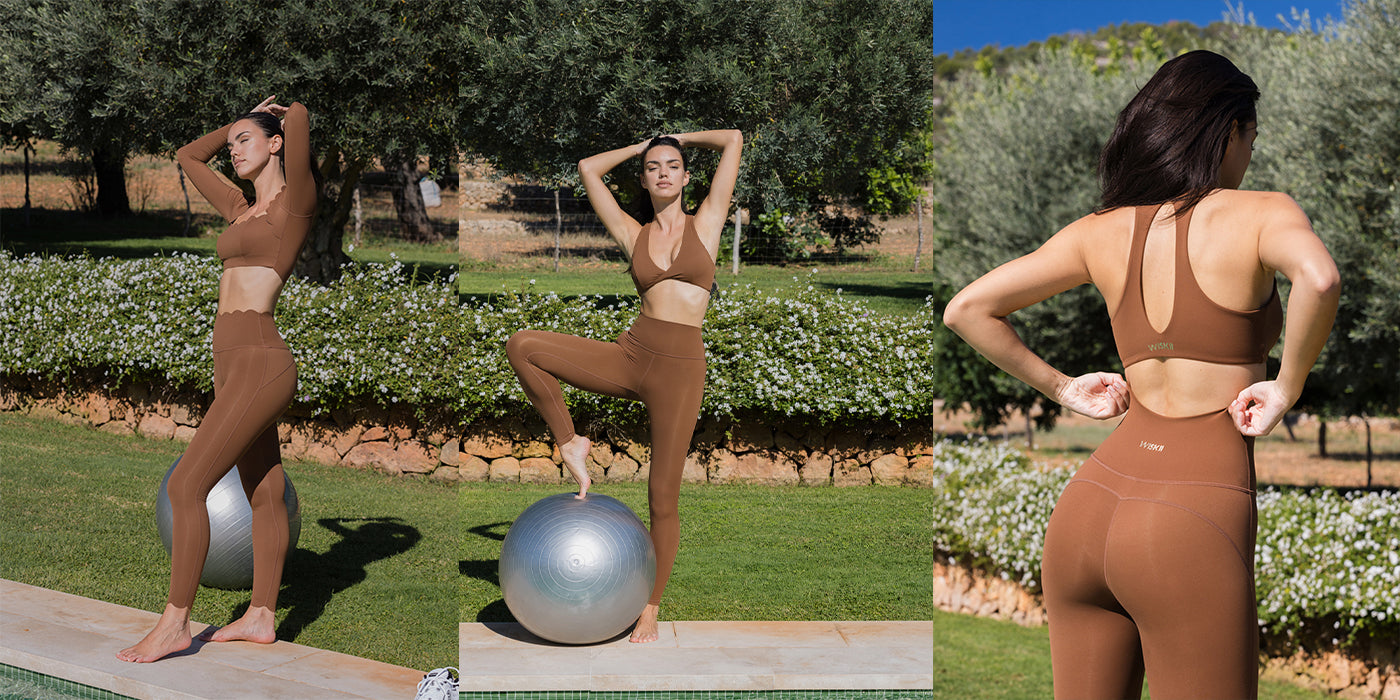
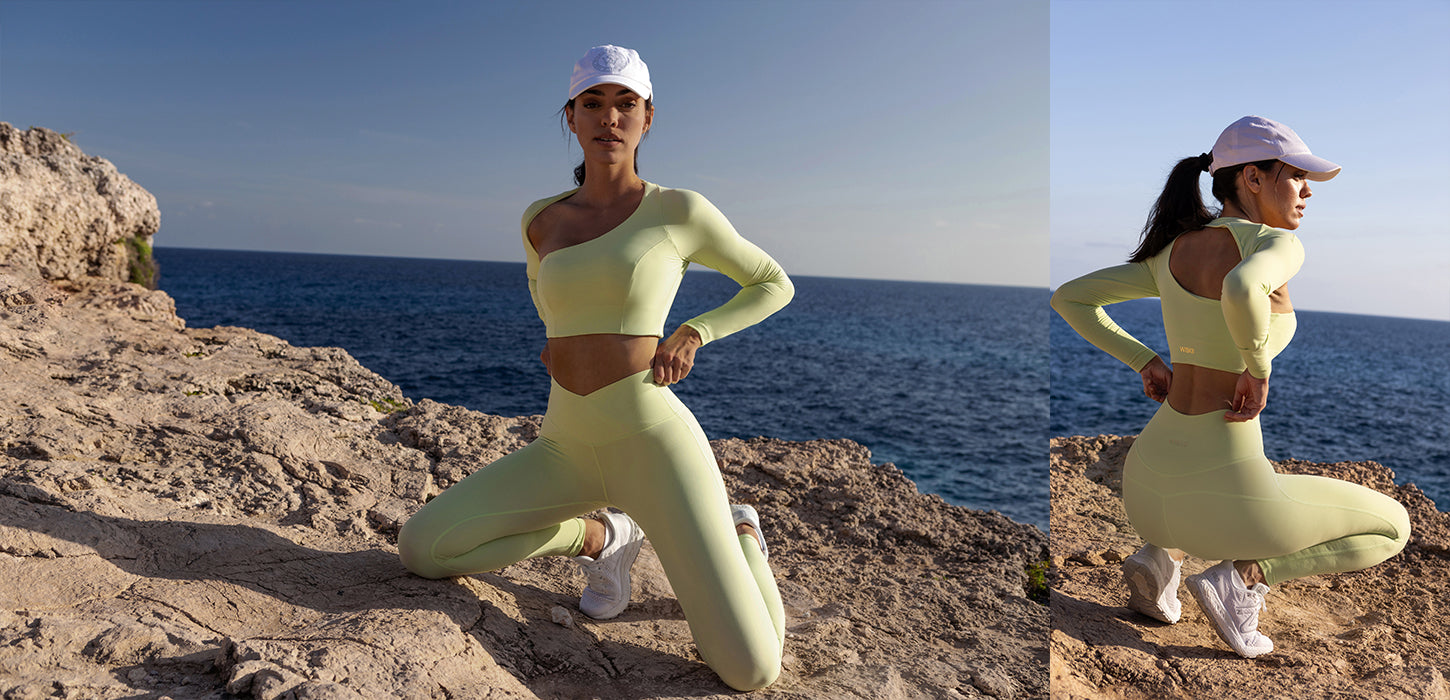
Leave a comment
This site is protected by hCaptcha and the hCaptcha Privacy Policy and Terms of Service apply.